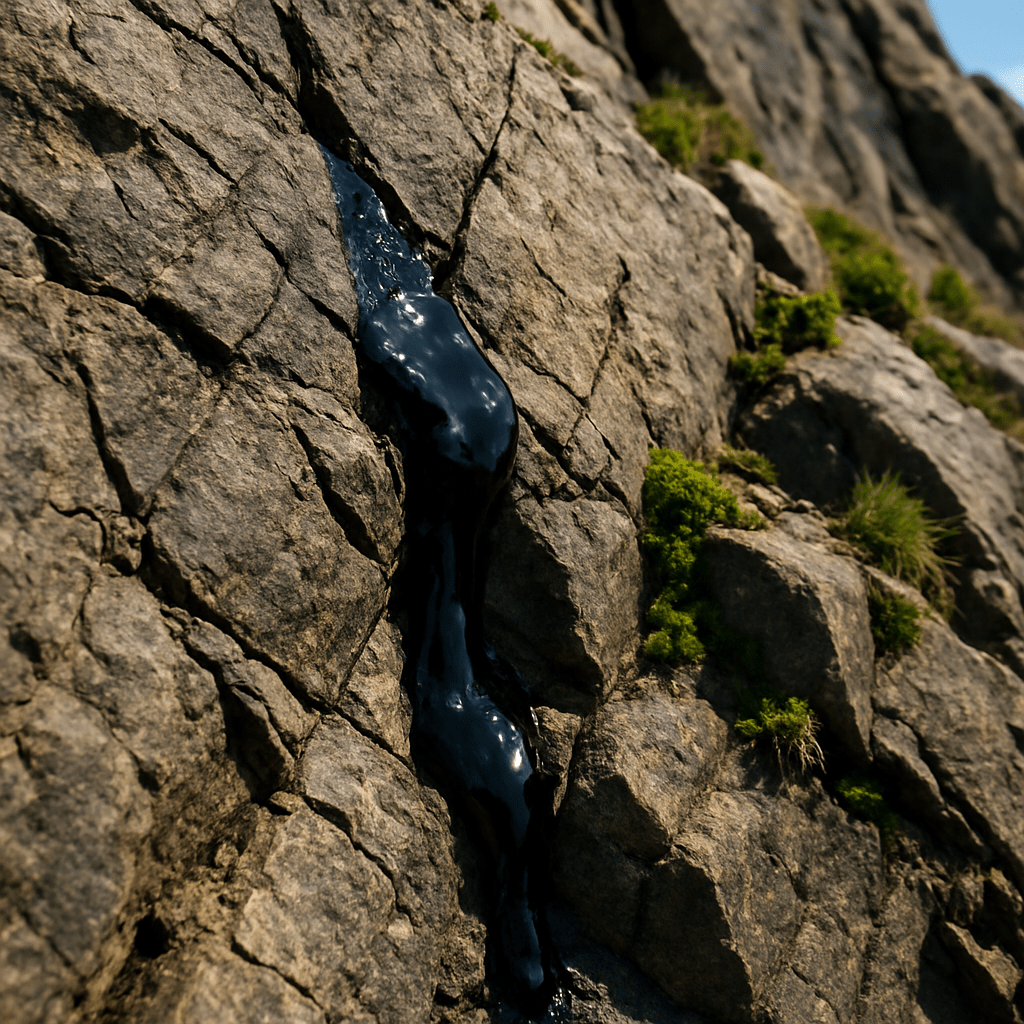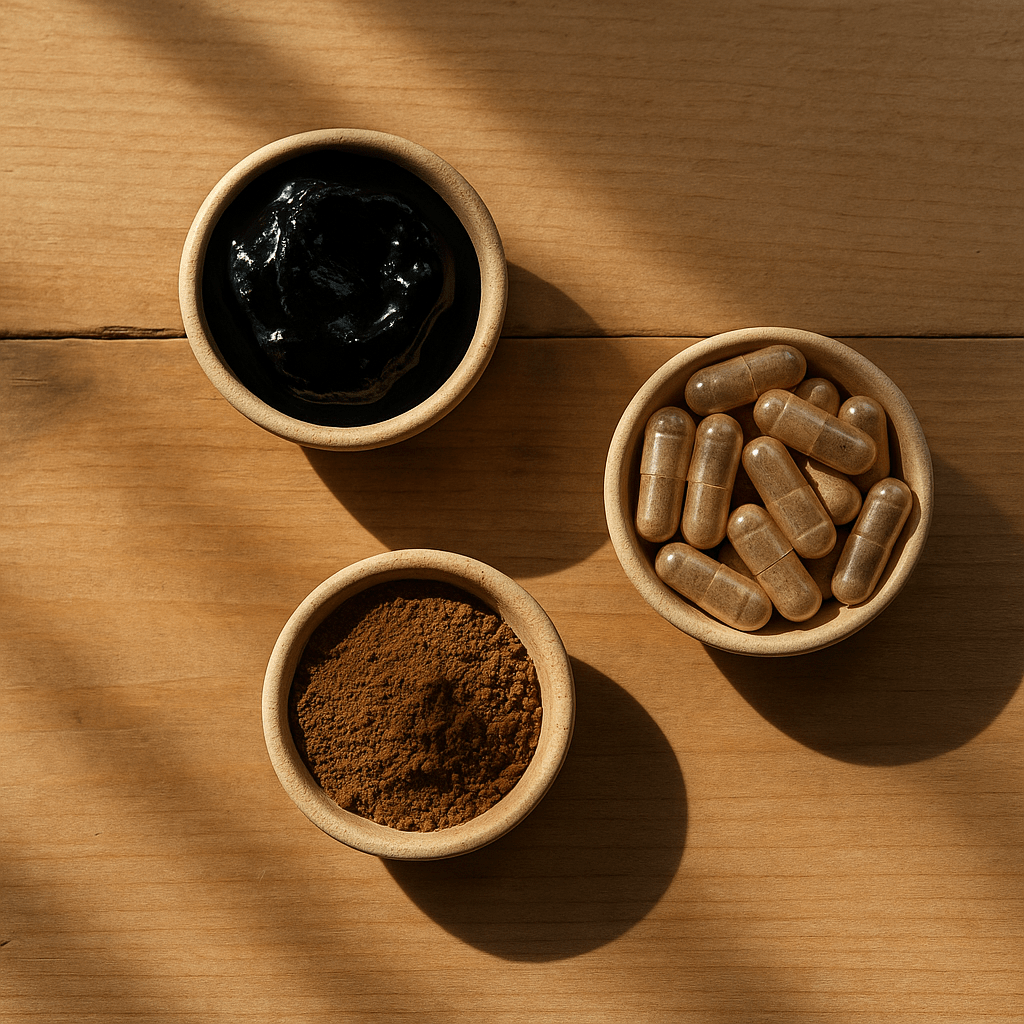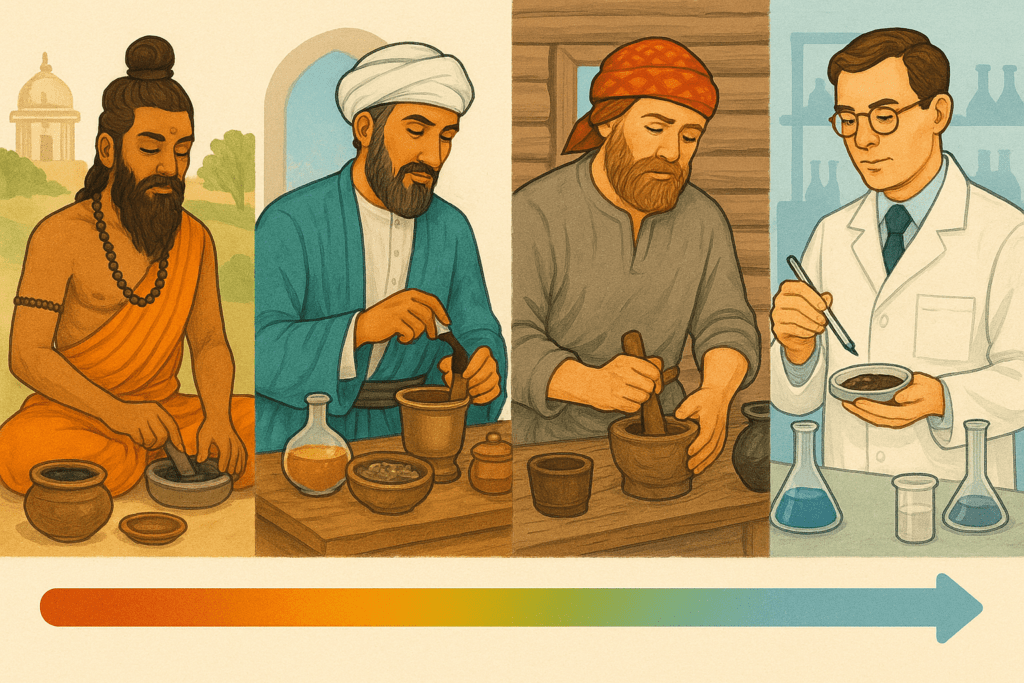Shilajit, also known as mountain resin, is a resinous substance found in the cracks of the Himalayan, Altai, and other mountain ranges. This dark, viscous mineral preparation has been used for centuries in traditional Ayurvedic, Persian, and Russian medicine to treat various ailments and increase energy.

In this comprehensive guide, we will review the properties, benefits, and scientific research of mumijo, based on both ancient medical texts and the latest scientific research.
What is mumijo? Origin, types, and composition
Mumijo (also known as shilajit, mumijo, moomiyo, or mineral resin) is a unique natural substance that has formed over centuries in the crevices of mountain rocks. This dark-colored, resin-like compound is found in many mountainous regions of the world, including the Himalayas, Altai, Caucasus, and Tibet.
Historically, mumijo has been used in different cultures and medical teachings. In Ayurveda, the ancient Indian system of medicine, it is called “mountain sweat” and is considered an elixir of life. In Persian medicine, mumijo was used to treat fractures and wounds, and in Russian and Mongolian traditional medicine, as a universal immune-boosting product.
Based on the form and level of processing, mumijo can be divided into:

- raw/unprocessed mummy – dark-colored resin with rock impurities;
- purified mummy – purified product without impurities;
mummy resin – concentrated, thick form; - mummy powder – dried and crushed form;
- capsules – dosed, convenient form for consumption.
The composition of mummy is complex and depends on the geographical origin. The main active components:
- fulvic acid – a group of organic acids with antioxidant properties;
- humic acid – organic compounds resulting from the decomposition of plant materials;
- macro and microelements – calcium, magnesium, potassium, zinc, iron and many others;
- amino acids – building blocks of the body;
- vitamins and antioxidants – various antioxidant compounds.
Theories of Origin: Biological, Geological, and Bio-Mineral Explanations
There is no consensus among scientists on the origin of the mummy. The most popular theories are:
- Biological theory – the mummy is formed from plant remains that have been compressed by rocks and minerals over centuries;
- Geological theory – states that it is a specific combination of minerals and organic matter formed as a result of geological processes;
- Bio-Mineral theory – explains that the mummy is a combination of biological and geological processes, when microorganisms interact with rocks and organic matter.
Regardless of the origin, scientists agree that the formation of the mummy takes centuries, and perhaps thousands of years, creating unique properties.
Main benefits of mummy
Mummy has traditionally been valued as a universal health-boosting agent. Modern research is beginning to confirm many of the traditional claims, but it should be noted that some effects still require more detailed clinical studies.
Immune system and anti-inflammatory effects
One of the most valued properties of mountain gum is its ability to modulate the immune system. Studies show that mummy can:
- stimulate the production and functioning of white blood cells;
- reduce inflammation in the body;
- act as an adaptogen, helping the body adapt to stress.
Fulvic acid, one of the main active components, has immunomodulatory properties that can help maintain an optimal immune response in the body. Some studies also indicate the potential effect of mummy on reducing the activity of autoimmune processes.
Energy, endurance and cognitive performance
Traditionally, mineral gum has been used as a tonic, increasing vitality and energy. Modern research confirms that mummy can:
- increase the amount of ATP (adenosine triphosphate) in the body’s cells, which is directly related to energy production;
- improve the function of mitochondria – the “powerhouses” of cells;
- reduce mental fatigue and improve cognitive function;
- increase physical endurance in athletes and physically active people.
Studies have shown that the use of mountain resin can help to recover faster after intense physical exertion and improve oxygen absorption, which is especially important for athletes and the elderly.

Joint, Bone and Tissue Regeneration
In traditional medicine, mummy has been widely used to treat bone fractures, joint problems and general degenerative diseases.

Scientific research is beginning to support the following claims:
- The mineral resin may accelerate the healing of bone fractures;
- Reduce joint pain and inflammation, especially in arthritis;
- Strengthen connective tissue;
- Support bone mineral structure and density.
The minerals in Shilajit, especially calcium, magnesium, and phosphorus, along with organic compounds, may improve bone health and help maintain optimal joint function.
Blood Sugar and Metabolic Health
Several studies suggest that Shilajit may have beneficial effects on metabolic processes, especially sugar regulation:
- Helps increase insulin sensitivity;
- Regulates blood glucose levels;
- May have potential value in the prevention and adjunctive treatment of diabetes;
- Helps optimize lipid profiles.
Fulvic acid and other bioactive components in Shilajit are thought to be involved in glucose metabolism, although further detailed research is needed in this area.
Reproductive and Hormonal Health for Men and Women
Traditionally, mummy has been used to improve fertility in both sexes. Modern research also suggests several potential benefits:
For men:
- may increase testosterone levels;
- improve sperm quality and quantity;
- help with erectile dysfunction;
- increase sex drive.
For women:
- regulate hormone balance;
- alleviate menopausal symptoms;
- improve overall reproductive health;
- increase fertility.
Antioxidant and anti-aging properties
Mummy is considered a powerful antioxidant that can fight free radicals that contribute to aging and the development of many diseases. Studies show that the mineral resin can:
- neutralize free radicals;
- reduce oxidative stress;
- protect DNA from damage;
- promote detoxification processes in the body.
Due to these properties, mineral resin has been associated with the potential to increase longevity and slow down the aging process, although these claims require further scientific evidence.
How to Use Mumiye Safely (Forms, Dosage and Directions)
To get the most out of your mountain resin, it’s important to know how to use it properly, what dosage is needed, and how to choose a quality product
Choosing the right form: resin, powder or capsules?
Mumiye is available on the market in various forms, each of which has its own advantages and disadvantages:
Mumiye resin (concentrated form):
- advantages: least processed, complete composition, stronger effect;
- disadvantages: strong taste, difficult to dose, requires special storage.
Mumiye powder:
- advantages: easy to dose, can be mixed with liquids or food;
- disadvantages: faster oxidation, possible loss of properties with longer storage.
Mumiye capsules:
- advantages: convenient to use, accurate dosage, longer shelf life;
- disadvantages: often contains additives, lower bioavailability than resin.
Beginners are recommended to choose capsules or powder due to easier dosing. Experienced users often choose resin due to its greater potency.
Mumiye Dosage
The recommended dosage of mumiye depends on the form, concentration and individual needs:
- Resin: 100-300 mg per day, usually divided into 1-3 doses;
- Powder: 250-500 mg per day;
- Capsules: according to the manufacturer’s recommendations, usually 1-2 capsules per day.
It is always recommended to start with a lower dose, observing the body’s reaction. After 2-3 weeks of use, it is advisable to take a 1-2 week break.
Usage recommendations:
- it is best to take in the morning or before lunch to avoid affecting sleep;
- the resin is often dissolved in warm water or milk;
- mountain gum can be taken with honey, which is traditionally considered a synergistic combination;
- taking with lemon juice or vitamin C may increase mineral absorption;
- it is recommended to take with food to avoid possible stomach irritation.
Signs of a quality mummy
To ensure safety and effectiveness, it is important to be able to recognize a quality product:
- Color: quality resin should be dark brown to black;
- Smell: specific, bituminous, reminiscent of the smell of resin or oil;
- Consistency: soft at room temperature, hardens in the refrigerator;
- Solubility: quality mummy dissolves completely in warm water, leaving no sediment;
- Certificates: look for products tested for heavy metals and other contaminants;
- Origin: preferably from well-known regions (Altai, Himalayan mountains) with a clear declaration of origin;
- Additional additives: quality products should contain a minimum amount of additional additives.
It is recommended to choose manufacturers who openly share the results of laboratory tests and have a clear quality control system.
Possible Side Effects, Risks, and Precautions
While mummy is generally considered safe to use, like any active ingredient, it can cause adverse reactions in some people or if used improperly.
The most common side effects are:
- mild dizziness;
- indigestion;
- increased heart rate;
- insomnia (especially when used in the evening);
- allergic reactions (rare).
Risk of heavy metals and contaminants:
- Untested or untreated mummy may contain dangerous impurities:
- heavy metals (lead, mercury, arsenic);
- microbiological contamination;
- residues of pesticides or other chemicals;
- artificial additives.
Who should not use mummy:
- pregnant and breastfeeding women;
- children under 12 years of age;
- people with hemophilia or other bleeding disorders;
- people with acute liver or kidney disease;
- people with known hypersensitivity to any component of the mummy.
Drug interactions:
Mountain resin may interact with some medications:
- blood thinners (increased risk of bleeding);
- diabetes medications (possible additional reduction in sugar levels);
- hypertension medications (possible additional reduction in blood pressure);
- drugs that affect the immune system.
It is always necessary to consult a doctor before using mummy, especially if you are taking any medications or have existing health problems.
Mummy in Traditional and Modern Medicine
Mummy has a rich historical heritage, with roots in thousands of years of medical practices, and today it is also receiving scientific interest.
Historical chronology of mummy:

- 3000-5000 BC – first evidence of mumijo use in India and Nepal;
- 7th-10th centuries – Arab physicians, including Avicenna, documented the healing properties of mumijo;
- 12th-14th centuries – use spread in Persian (now Iranian) medicine;
- 16th-18th centuries – mumijo became known in Russian and Mongolian traditional practices;
- 19th century – systematic research began in the Russian Empire;
- 2nd half of the 20th century – Soviet scientists begin laboratory research;
- 21st century – international scientific interest and commercial development.
Traditional uses:
- In Ayurveda – as a “rasayana” (rejuvenating tonic), to increase energy, strengthen bones;
- In Persian medicine – for healing wounds, fractures, improving immunity;
- In Tibetan medicine – as a longevity preparation, to maintain the body’s balance;
- In Russian folk medicine – for digestive tract disorders, general strengthening of the body;
- In Mongolian practices – to relieve pain, to solve urinary tract problems.
Modern Scientific Perspective
In recent decades, researchers have begun to investigate the effectiveness of traditional uses of mummy. Studies include:
- Neuroprotective effects – potential protective effects on the nervous system, studies on Alzheimer’s and Parkinson’s diseases;
- Antiulcerogenic properties – studies show that mummy may help protect the stomach lining;
- Antidiabetic properties – improving glucose metabolism and increasing insulin sensitivity;
- Immunomodulatory effects – supporting optimal immune system function;
- Anticarcinogenic potential – early studies suggest a possible protective effect against the development of certain forms of cancer;
- Antimicrobial activity – traditional use of mummy to treat infections has been confirmed by laboratory studies.
While the research is promising, most of it is still in its early stages. Most of the studies have been conducted in vitro or in animals, and large, controlled human studies are lacking. Therefore, while traditional experience and preliminary research are promising, further clinical studies are needed to fully understand the healing properties of mummy and its use in modern medicine.
Frequently Asked Questions About Shilajit
What is Shilajit and how is it different from Shilajit?
Shilajit and Shilajit are the same product, just called differently in different cultures. Shilajit is the name mainly used in post-Soviet countries, Central Asia and Eastern Europe, while Shilajit is a Sanskrit name, more widely used in South Asia and the West. In both cases, it is the same dark-colored resinous substance formed in the cracks of mountain rocks, with a similar composition of biologically active compounds, fulvic acid and minerals.
What are the main proven benefits of Shilajit?
The most scientifically proven benefits of Shilajit are: antioxidant effects (due to fulvic acid), increasing energy and endurance (improves mitochondrial function), strengthening immunity (immunomodulatory properties), improving joint and bone health (due to the mineral complex), and reducing inflammation. Studies also show positive effects on male reproductive health, especially sperm quality and testosterone production. However, many traditional uses still await more detailed clinical studies.
Is mummy safe for daily use and what is the recommended dosage?
Purified and high-quality mummy is considered relatively safe for daily use for most adults, but it is recommended to take a 2-4 week break after 2-3 months of use. Recommended doses depend on the form: resin – 100-300 mg per day, powder – 250-500 mg per day, capsules – according to the manufacturer’s instructions (usually 1-2 capsules). You should always start with a lower dose, observing the body’s reaction. Mummy is not recommended for pregnant and lactating women, children, as well as those with severe kidney or liver diseases.
How to recognize a quality mummy preparation?
High-quality mummy should be dark brown or black in color, have a characteristic bituminous odor, and dissolve completely in warm water without leaving a residue. It is worth choosing products that have been tested for heavy metals and other contaminants, have quality certificates and a clear declaration of origin. Reliable manufacturers provide laboratory test results and indicate the amount of fulvic acid. The resin should be soft at room temperature and harden in the refrigerator. Cheap products that contain many additives or do not have information about the origin are often of poor quality or even counterfeit.
Who should avoid mummy and why?
Pregnant and breastfeeding women (lack of safety studies), children under 12 years of age (due to potential effects on the developing body), people with hemophilia or bleeding disorders (may have a blood-thinning effect), people with acute liver or kidney diseases (due to additional load on the excretory organs). Also, mummy should not be used by those who are allergic to any of its components. Individuals taking blood thinners, diabetes, or hypertension medications should consult their doctor before using mummy regarding possible drug and supplement interactions.


